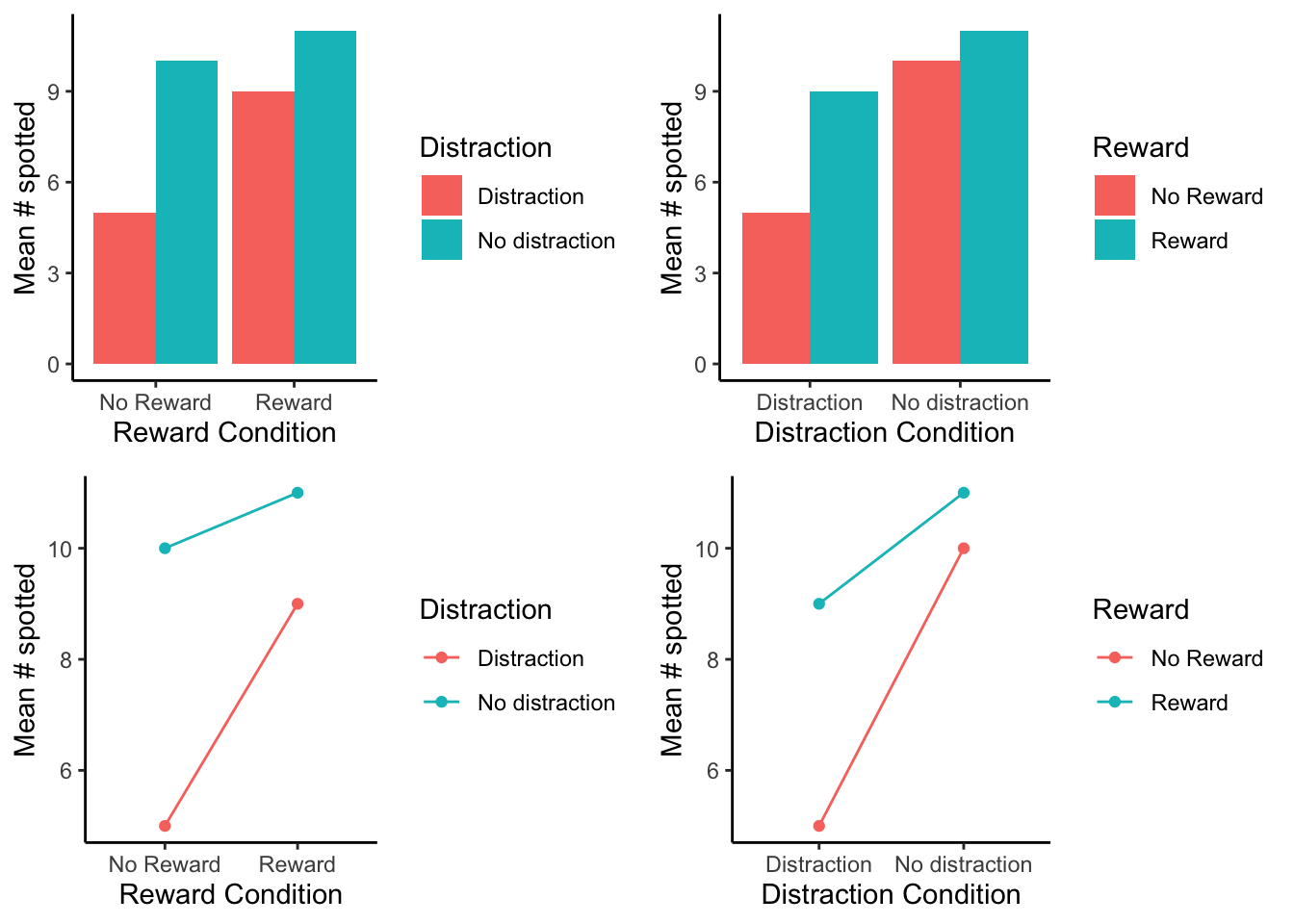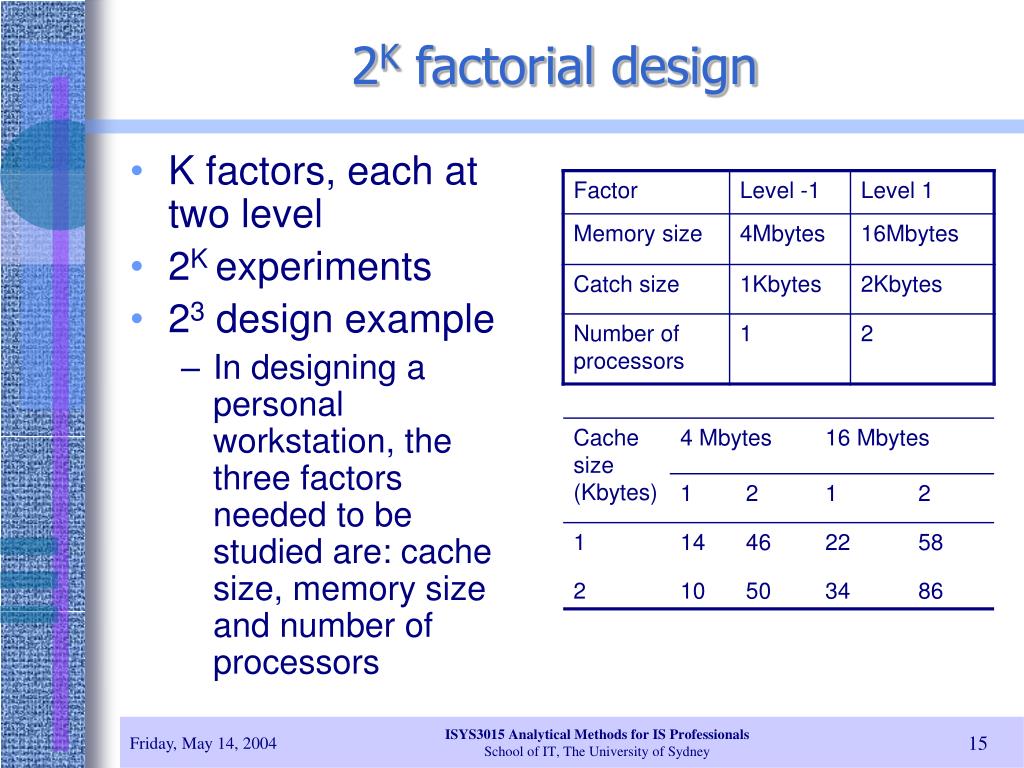Table Of Content
- Book traversal links for Lesson 5: Introduction to Factorial Designs
- Multiple Independent Variables
- How Factorial Survey Analysis Improves Our Understanding of Employer Preferences
- 2.5. Graphing the Results of Factorial Experiments¶
- Note that this page is in the process of being updated
- 2. Two-way RM ANOVA as a mixed-effect model…

Now we assign the treatment combinations to the blocks, where the pairs represent the levels of factors A and B. In our example, participants are nested within age-group, becauseeach person is represented at only one level of that factor (i.e., youare only a younger adult or older adult). However, Condition is acrossed factor, because each person is represented at all levels ofCondition (i.e., each person was measured in all three conditions). For the examples we will walk through, we will ignore differentvariables at different times. As these researchers expected, participants who were lower in SES tended to give away more of their points than participants who were higher in SES. This is consistent with the idea that being lower in SES causes people to be more generous.
Book traversal links for Lesson 5: Introduction to Factorial Designs
So people who are high in extraversion might be high or low in conscientiousness, and people who like reflective and complex music might or might not also like intense and rebellious music. The second point is that factor analysis reveals only the underlying structure of the variables. It is up to researchers to interpret and label the factors and to explain the origin of that particular factor structure. For example, one reason that extraversion and the other Big Five operate as separate factors is that they appear to be controlled by different genes [PDMM08].
Multiple Independent Variables

When designing a mixed methods study, it is occasionally helpful to list the theoretical drive in the title of the study design. An investigation, in Morse and Niehaus’s (2009) view, is focused primarily on either exploration-and-description or on testing-and-prediction. In the first case, the theoretical drive is called “inductive” or “qualitative”; in the second case, it is called “deductive” or “quantitative”.
How Factorial Survey Analysis Improves Our Understanding of Employer Preferences
This would mean that each participant would be tested in one and only one condition. This would mean that each participant would need to be tested in all four conditions. The advantages and disadvantages of these two approaches are the same as those discussed in Chapter 5.
For example, all participants could be tested either while using a cell phone or while not using a cell phone and either during the day or during the night. This would mean that each participant was tested in one and only one condition. In a within-subjects factorial design, all of the independent variables are manipulated within subjects. All participants could be tested both while using a cell phone and while not using a cell phone and both during the day and during the night. The advantages and disadvantages of these two approaches are the same as those discussed in Chapter 4).
First, does the effect of being tired depend on the levels of the time since last meal? We see the red bar (tired) is 1 unit lower than the green bar (not tired). We see the red bar (tired) is 3 units lower than the green bar (not tired). So, there is an effect of 3 units for being tired in the 5 hour condition. Clearly, the size of the effect for being tired depends on the levels of the time since last meal variable. To continue with more examples, let’s consider an imaginary experiment examining what makes people hangry.
Semantic concept schema of the linear mixed model of experimental observations Scientific Data - Nature.com
Semantic concept schema of the linear mixed model of experimental observations Scientific Data.
Posted: Thu, 27 Feb 2020 08:00:00 GMT [source]
You can look at the red bars first and see that the red bar for no-shoes is slightly smaller than the red bar for shoes. The green bar for no-shoes is slightly smaller than the green bar for shoes. Except in this case, we find the average heights in the no hat vs. hat conditions by averaging over the shoe variable. To find the main effect of the shoes manipulation we want to find the mean height in the no shoes condition, and compare it to the mean height of the shoes condition. To do this, we collapse, or average over the observations in the hat conditions.
Some were negative, health-related words (e.g., tumor, coronary), and others were not health related (e.g., election, geometry). The non-manipulated independent variable was whether participants were high or low in hypochondriasis (excessive concern with ordinary bodily symptoms). Results from this study suggested that participants high in hypochondriasis were better than those low in hypochondriasis at recalling the health-related words, but that they were no better at recalling the non-health-related words. In many factorial designs, one of the independent variables is a non-manipulated independent variable.

Factorial designs require the experimenter to manipulate at least two independent variables. Imagine you are trying to figure out which of two light switches turns on a light. The dependent variable is the light (we measure whether it is on or off).
When the effect of one independent variable depends on the level of another. The study by Brown and her colleagues was inspired by the idea that people with hypochondriasis are especially attentive to any negative health-related information. This led to the hypothesis that people high in hypochondriasis would recall negative health-related words more accurately than people low in hypochondriasis but recall non-health-related words about the same as people low in hypochondriasis. The main effects all have 2 df, the three two-way interactions all have 4 df, and the three-way interaction has 8 df.
They include duplexes comprised of two dwellings sharing one common wall, triplexes for three households, and quadplexes for four families. Multi-family home designs are available in duplex, triplex, and quadplex (aka twin, threeplex and fourplex), configurations and come in a variety of styles! Design Basics can also modify many of our single-family homes to be transformed into a multi-family design.


No comments:
Post a Comment